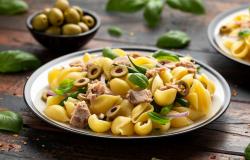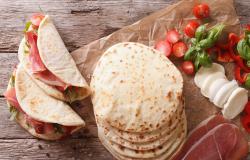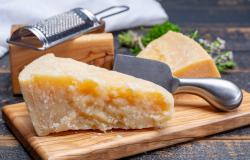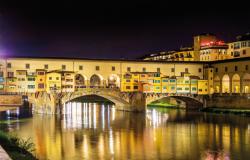So, How Many Pasta Shapes Are There?
ITA:
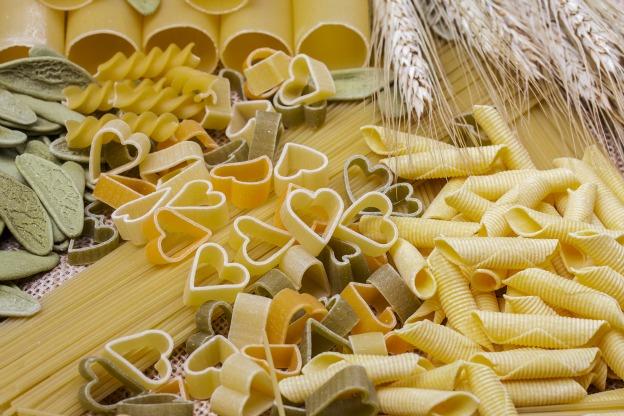
It is estimated that there are approximately 350 different types of pasta - and about four times that many names for them! This is due to the fact that some types may have different names in different languages, or even in the same language: in Italy, for example, names vary according to the region or area. In addition, pasta manufacturers and cooks may come up with new shapes or give new names to old shapes…the possibilities thus become endless!
Italian pasta names often end with the masculine plural suffixes –ini, -elli, -illi, -etti or the feminine plurals -ine, -elle, to convey the sense of "little"; or with -oni, -one, meaning "large". Other suffixes exist too: -otti ("largish") and -acci ("rough", "badly made"). In Italian, all pasta type names are plural. Pasta ending in 'ini' may be a smaller version of a particular shape, and pasta ending in 'oni' the larger one. For example, spaghettini (smallest), spaghetti (regular), spaghettoni (largest).
Pasta shapes are specifically designed to hold the sauce in the best way possible. Many regions have created their own pasta shapes: for example, bigoli (thick, noodle-like spaghetti) are from Veneto; strozzapreti (meaning, ‘priest strangler’) are from Emilia-Romagna; trofie (perfect with pesto) are from Liguria, and orecchiette (or, ‘little ears’) are from Puglia.
According to Academia Barilla’s “I love pasta” recipe book, gnocchi is the forefather of all pasta; it evolved into other shapes by manipulating the dough by hand or using simple tools, mixing wheat and water to produce local variations.
The easiest way to categorize pasta is into long, short and soup shapes. Long pasta can be further divided into cylindrical, either solid or hollow, and rectangular or rounded. The first group includes such forebears as spaghetti and vermicelli. Examples for the second group include linguine, bavette, and trenette.
Short pasta names and shapes were influenced by their times; for example, at the end of the 19th century, ditalini rigati were also known as garibaldini as a tribute to Garibaldi; mafalde and mafaldine were named in honor of Princess Mafalda of Savoy (or perhaps the daughter of a pasta maker!).
No matter the name or shape, pasta is a simple meal, synonym of Italy, and it is always sure to please everybody.
Want more pasta? Check out our Foodie Guide to Pasta and Foodie Guide to Egg Pasta and our recipes.
Si stima che esistano circa 350 diversi tipi di pasta - e circa quattro volte tanto di nomi! Ciò è dovuto al fatto che alcuni tipi possono avere diversi nomi in diverse lingue, o anche nella stessa lingua: in Italia, ad esempio, il nome varia a seconda della regione o area. Inoltre, i produttori di pasta e i cuochi spesso danno luogo a forme nuove o nomi nuovi a vecchi formati ... le possibilità così diventano infinite!
I nomi italiani della pasta spesso terminano con suffissi plurali maschili, -ini, -elli, -illi, -etti, o plurali femminili, -ine, -elle, per trasmettere il significato di “piccolo”; o con -oni, -one, per significare “grande”. Esistono anche altri suffissi: -otti (“abbastanza grande”) e -acci (“mal fatto”). In italiano, tutti i nomi dei tipi di pasta sono plurali. Un nome di pasta che termina in 'ini' può essere la versione più piccola di una forma particolare, e un nome che termina in 'oni' la più grande. Ad esempio, spaghettini (il formato più piccolo), spaghetti (formato regolare), spaghettoni (il più grande).
I formati di pasta sono specificamente pensati per esaltare il sugo nel miglior modo possibile. Molte regioni hanno creato i propri formati di pasta: per esempio, i bigoli (simili agli spaghetti) sono originari del Veneto; gli strozzapreti sono tipici dell’Emilia-Romagna; le trofie (perfette con il pesto) sono liguri, e le orecchiette (o “piccole orecchie”) sono pugliesi.
Come scritto da Academia Barilla nel libro di ricette "Io amo la pasta", gli gnocchi rappresentano il progenitore di tutta la pasta; si sono poi evoluti in altre forme manipolando l'impasto a mano o con strumenti semplici, mescolando grano e acqua per produrre varianti locali.
Il modo più semplice di categorizzare la pasta è in forme lunghe, corte e per zuppe. La pasta lunga può essere ulteriormente suddivisa in cilindrica, piena o cava, e rettangolare o arrotondata. Il primo gruppo comprende tali precursori come gli spaghetti e i vermicelli. Esempi del secondo gruppo sono le linguine, le bavette, e le trenette.
I nomi e le forme della pasta corta sono stati influenzati dai tempi; per esempio, alla fine del 19° secolo, i ditalini rigati erano conosciuti anche come garibaldini in omaggio a Garibaldi; le mafalde e le mafaldine furono così nominate in onore della principessa Mafalda di Savoia (o forse della figlia di un produttore di pasta!).
Indipendentemente dal nome e dalla forma, la pasta è un pasto semplice, sinonimo di Italia, e di sicuro soddisfa sempre tutti.
